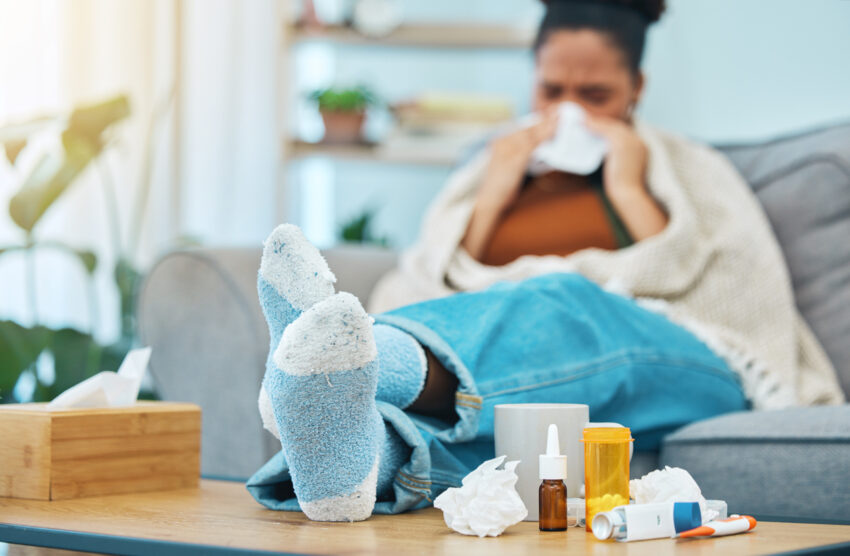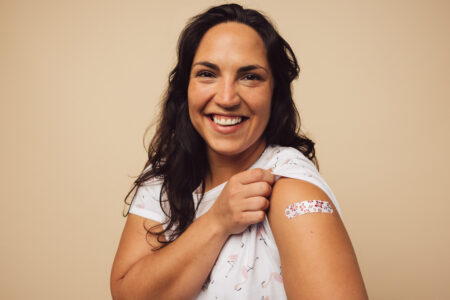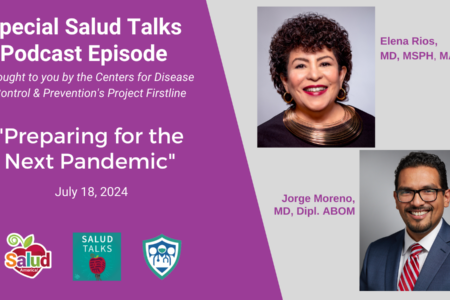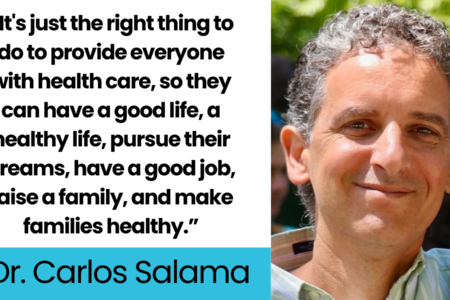
Share On Social!
The winter holidays are nearing, which means a drop in temperatures and a rise in flu!
The CDC estimates that the flu caused up to 41 million illnesses, up to 710,000 hospitalizations, and up to 52,000 deaths every year between 2010 and 2020.
How does flu season impact Latinos? What preventive steps can you and your family take?
Latinos and Flu Rates
Flu is a contagious respiratory illness caused by influenza viruses that infect the nose, throat, and sometimes the lungs, according to the CDC.
It can cause mild to severe illness, and at times can lead to death.
A 2021 study found that flu-associated hospitalization, ICU admission, and in-hospital death were prominent among ethnic minority groups, including Latinos.
The study also found that disparities were greatest in the youngest age groups.
“Among Hispanic children, rates were 1.9-3.0 times higher for all 3 severe flu-related outcomes,” the CDC reports.
The rise in rates for Latinos can be attributed to health disparities that they face, including lower numbers in flu vaccines.
During the 2021-2022 flu season, vaccination coverage for Latinos only reached 38%, compared to 54% among White and Asian adults.
“There are many reasons for disparities in severe outcomes of flu, including lack of access to health care and insurance, missed opportunities to vaccinate, and misinformation and distrust that contribute to lower levels of confidence in vaccines,” according to the CDC.
How to Take Preventive Measures
The CDC recommends a yearly flu vaccine as the best protection.

“This season, all flu vaccines will be designed to protect against the four flu viruses that research indicates will be most common,” according to the CDC.
The CDC reports that the most common include:
- flu A(H1) virus
- flu A(H3) virus
- flu B/Yamagata lineage virus and
- flu B/Victoria lineage virus
“People at higher risk of serious flu complications include young children, pregnant people, people with certain chronic health conditions like asthma, diabetes or heart and lung disease, and people 65 years and older,” the CDC reports.
Everyday preventive actions that can help reduce the spread of flu include:
- Avoiding close contact with people who are sick.
- If sick, limiting contact with others as much as possible to keep from infecting them.
- Covering coughs and sneezes.
- Covering your nose and mouth with a tissue when you cough or sneeze and throwing the tissue in the trash after you use it.
- Washing your hands often with soap and water. If soap and water are not available, use an alcohol-based hand rub.
- Avoiding touching your eyes, nose, and mouth.
- Cleaning and disinfecting surfaces and objects that may be contaminated with viruses.
If you or someone you know has the flu, the CDC recommends that people stay home for at least 24 hours after their fever is gone except to get medical care or other necessities.
“If you are at higher risk from flu and get flu symptoms, call your health care provider early so you can be treated with flu antivirals if needed. Follow your doctor’s instructions for taking this drug,” according to the CDC.
How Healthy Is Your Community?
Ensuring the health of you and your family is important.
But what about the health of your community?
Get a Salud America! Health Equity Report Card to discover the state of local health!
The report card provides interactive maps and data on a variety of health topics including healthcare, physical and mental health, transportation, and housing.
Compare the data of your county to other counties across the state and the nation.
Use the data from the report card to share with local leaders and organizations to advocate for healthy change in your area!
GET YOUR HEALTH EQUITY REPORT CARD!
By The Numbers
142
Percent
Expected rise in Latino cancer cases in coming years



